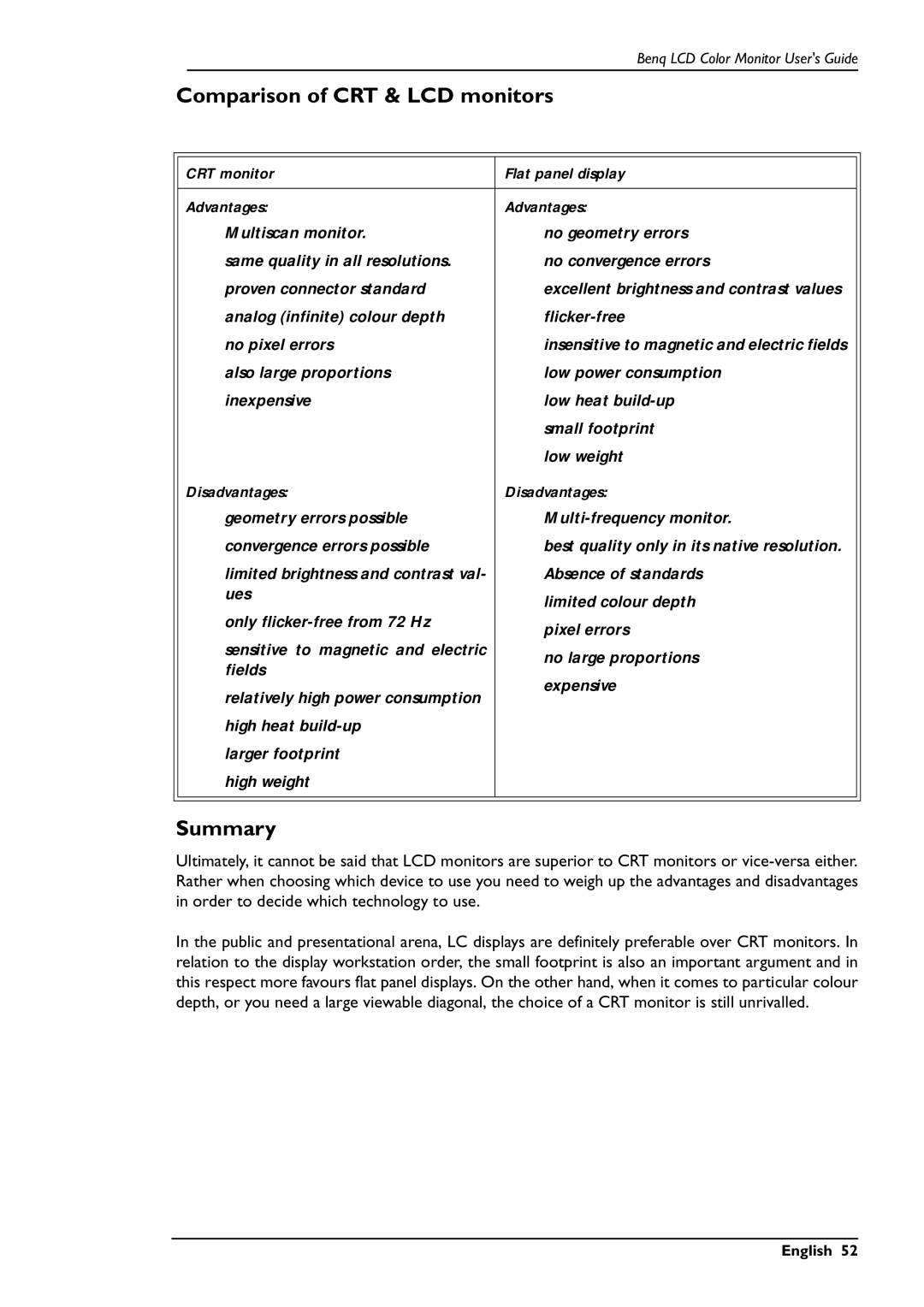
Benq LCD Color Monitor User's Guide
Comparison of CRT & LCD monitors
|
|
|
|
| CRT monitor | Flat panel display |
|
|
|
|
|
| Advantages: | Advantages: |
|
| hMultiscan monitor. | hno geometry errors |
|
| hsame quality in all resolutions. | hno convergence errors |
|
| hproven connector standard | hexcellent brightness and contrast values |
|
| hanalog (infinite) colour depth |
| |
| hno pixel errors | hinsensitive to magnetic and electric fields |
|
| halso large proportions | hlow power consumption |
|
| hinexpensive | hlow heat |
|
|
| hsmall footprint |
|
|
| hlow weight |
|
| Disadvantages: | Disadvantages: |
|
| hgeometry errors possible |
| |
| hconvergence errors possible | hbest quality only in its native resolution. |
|
| hlimited brightness and contrast val- | hAbsence of standards |
|
| ues | hlimited colour depth |
|
| honly |
| |
| hpixel errors |
| |
| hsensitive to magnetic and electric |
| |
| hno large proportions |
| |
| fields |
| |
| hexpensive |
| |
| hrelatively high power consumption |
| |
|
|
| |
| hhigh heat |
|
|
| hlarger footprint |
|
|
| hhigh weight |
|
|
|
|
|
|
|
|
|
|
Summary
Ultimately, it cannot be said that LCD monitors are superior to CRT monitors or
In the public and presentational arena, LC displays are definitely preferable over CRT monitors. In relation to the display workstation order, the small footprint is also an important argument and in this respect more favours flat panel displays. On the other hand, when it comes to particular colour depth, or you need a large viewable diagonal, the choice of a CRT monitor is still unrivalled.
English 52
